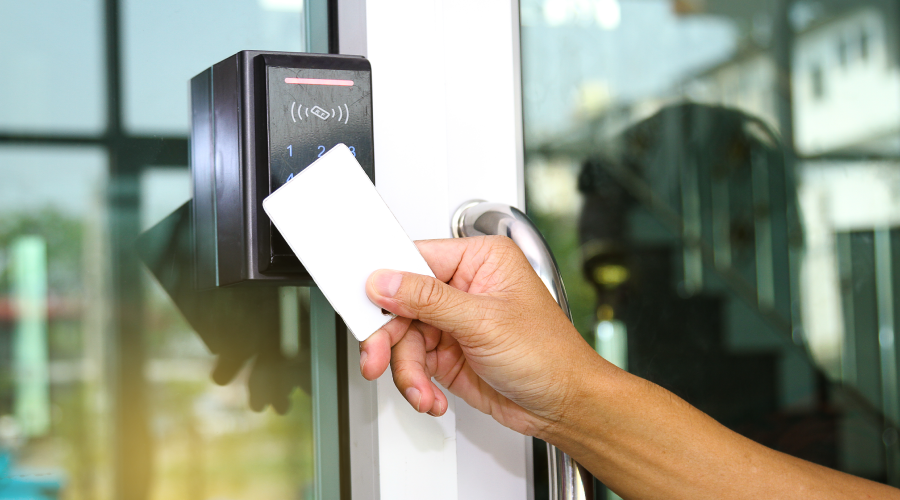Three Door Installation Problems To Avoid: Air Balancing, Legal Issues and Design Challenges
Though code enforcement and problems with security systems are two of the most common problems when it comes to new door installations, those aren’t the only things that can go wrong.
Problems with air balancing, poor coordination and even legal issues can arise if facility executives aren’t careful. Here’s how to avoid having three more door installation problems.
Air Balancing Problems
Beyond hardware, an often overlooked door installation factor is air balancing, one of the last tasks to be performed when a new facility is being built. Air balancing will affect the way doors close and latch.
“I was looking at a school last week, and it was like a windstorm was coming out of the gym. I could not close the door,” says Adams. “Once they get the air balancing done that will be cured.” A door that’s adjusted before air balancing may not meet code because it doesn’t close properly once balancing is complete.
Design Coordination
Consider the problems that could arise if, for example, the specification writer and the electrical engineer have a different understanding of which door was supposed to have a card reader.
“You must have adequate planning from the beginning,” says David Chaffin of HARD/SPECS. “If you didn’t pay attention to the fact that you would need access controls on a certain opening, you won’t have provisions in the specifications that you have to run power to the door, so you may have additional costs. That’s the type of thing you try to avoid.”
To sidestep coordination problems, facility executives should try to make sure all the key players are present during design conversations.
A lack of coordination is a particular problem in the installation of electrified hardware, which involves a wide variety of trades, including the contract hardware supplier, storefront hardware supplier, fire alarm subcontractor, electronics subcontractor, security supplier, and the people who are putting up the walls.
“So many people have their hands on the opening, and someone has to coordinate all of that,” says Joe Calvert, principal of Calvert Independent Hardware Specifications. “It should be in the bid documents.” According to Calvert, the hardware specifier can coordinate, or facility executives can hire a security engineering firm. The important thing is to have a single point of responsibility for openings.
Legality Issues
Improper hardware installation or doors that do not provide adequate protection can also lead to legal problems and building owners can be held responsible for the consequences, says William McInerney, a former consultant with 50 years of door industry experience.
Sometimes the lock is good, but the door is so flimsy that it can easily be kicked in, rendering the lock useless. In one case, a New York City hotel was successfully sued when an actress was raped in her hotel room.
The hardware aspect of security is also becoming more of an issue in schools. For example, in the Virginia Tech shooting, the absence of locks on classroom doors made it easier for the killer to gain access. In an August 2007 report, the university addressed, among other issues, hardware on classroom doors. The report recommended installation of interior locks on general assignment classrooms; exploration of a centrally controlled electronic card key access system for all important academic and administrative facilities to secure buildings during non-working hours; and installation of electronic card key access controls on interior doors of certain campus offices and monitoring by closed circuit television.
Related Topics:













